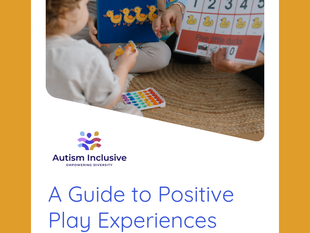top of page

Preparing Your Kindy Class for Success: An Inclusive Approach
0
16
0
The start of a new school year is an exciting time—an opportunity to refresh, reorganize, and create an environment that fosters learning and inclusion. Recently, we had the pleasure of working with Beldon Education Support Centre's Kindy class to prepare for a new cohort of students, many of whom are neurodivergent learners.

Here’s what we did to ensure a structured, engaging, and supportive classroom environment:
1. Establish Clear Weekly Routines
Consistency is key! We documented the weekly classroom routines to provide predictability and structure for the students. This helps reduce anxiety and supports self-regulation for all learners. Research suggests that "structured and predictable environments are essential for autistic children to develop confidence and engagement in learning" (National Research Council, 2001).
2. Create a Floor Plan Aligned with Classroom Routines
We mapped out the classroom to ensure key learning and play areas were well-defined and easily accessible. Spaces included:
Independent Learning Zone
Learning
Play Area
Craft Area
Calm Corner
Snack Area
Outdoor Play Space
Transition Zones
3. Identify and Manage High-Sensory Areas
By assessing the classroom’s sensory landscape, we identified areas with high sensory input—such as entrances, transition spaces, and pick-up/drop-off zones. From there, we strategically placed activities in spaces suited to their needs. For example, the Calm Area was positioned in a low-light, quieter section to support self-regulation. According to Dunn (2001), "sensory-friendly environments can significantly reduce distress and enhance engagement for neurodivergent learners."
4. Use a Color-Coded Floor Plan
To enhance spatial awareness and ease transitions, we color-coded each section of the classroom. This provides clear visual cues, helping children navigate their environment independently. Research supports that "visual structure improves comprehension and reduces anxiety in autistic learners" (Hodgson, 2019).
5. Practice Transitions Through the Space
Before finalizing the setup, we walked through the daily routine as if we were the students. This ensured that:
Transitions were smooth and logical
Spaces were easy to navigate
Movement between areas felt natural and not overwhelming
Studies indicate that "structured transition strategies help autistic children shift between activities with greater ease, reducing stress and promoting participation" (Koyama & Wang, 2011).
6. Implement Color-Coding Throughout the Classroom
To reinforce the designated areas, we matched physical classroom elements to the color-coded map, such as:
Colored chairs and tables
Floor mats that align with each space
Laminated desktop visuals corresponding to activity zones
7. Develop Visual Supports
Visual schedules are essential for all learners, particularly neurodivergent students. We created:
Whole-class schedules
Activity-specific visuals (e.g., handwashing and toileting steps)
Individualized schedules (based on student needs)
Transition visuals/schedules
Research has demonstrated that "visual schedules improve task engagement and independence in autistic students" (Knight, Sartini, & Spriggs, 2015).
8. Test and Adjust Based on Student Feedback
The most important lesson? Children are our best teachers. We trialed the setup for two weeks, observing how the children engaged with the environment. Based on their responses, we made necessary adjustments to enhance their learning experience.
Why This Matters
By taking a structured, sensory-aware, and student-centered approach to classroom setup, educators can create an inclusive space that supports all children—particularly those who are neurodivergent.
Research underscores that "inclusive and well-structured classrooms enhance learning outcomes for all students, particularly those with autism" (Wong et al., 2015).
If you’re preparing your kindy class for success this year, consider these strategies to promote engagement, independence, and a love for learning!
Check out our experience at Beldon Education Support Centre here.

Related Posts
Comments
Share Your ThoughtsBe the first to write a comment.
bottom of page










